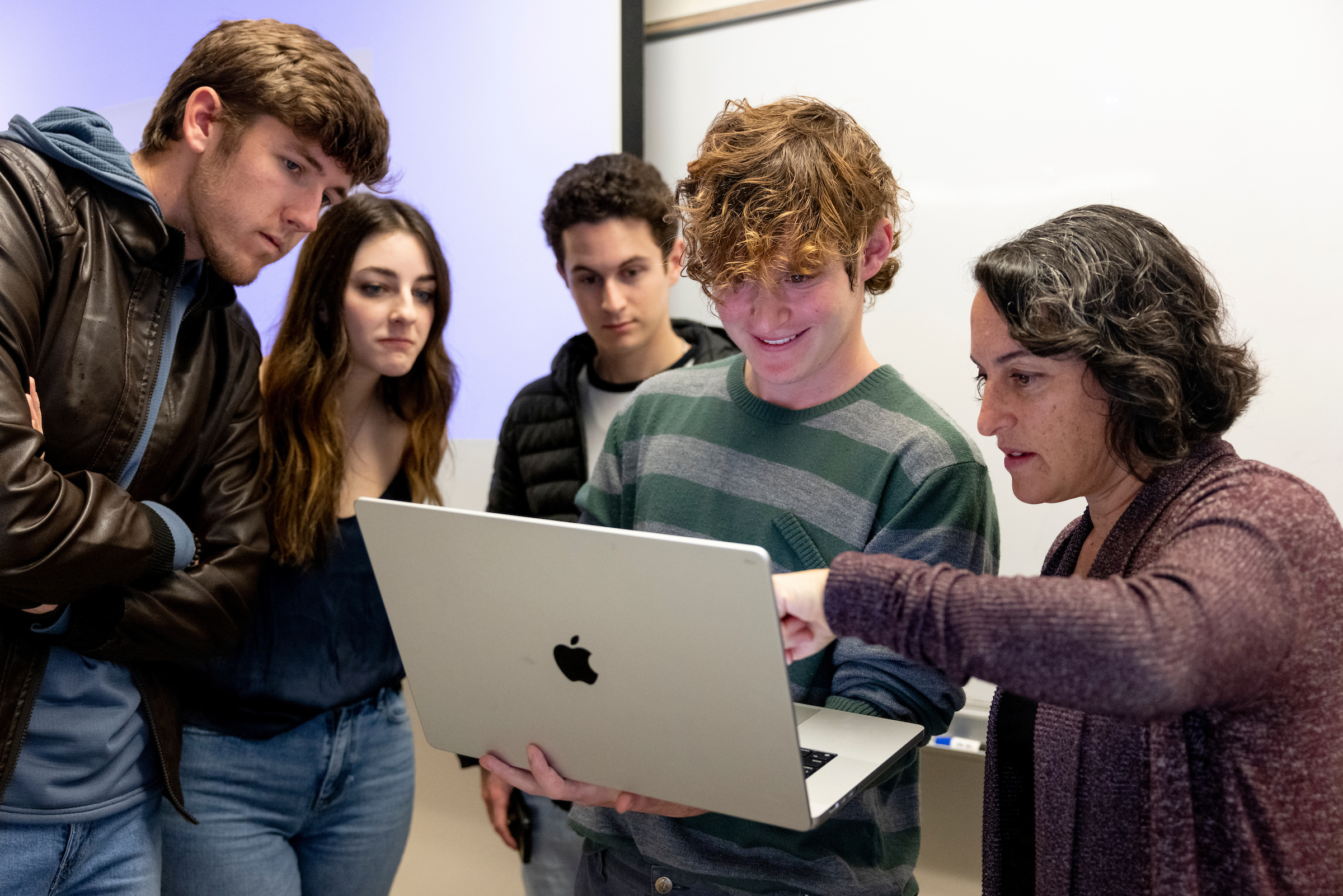You’ve probably heard it:
Local news isn’t what it once was.
Investigative reporting is on its way out.
Newspapers are dead, and the journalism industry is dying.
But journalism, in all its forms, isn’t dying. It’s just changing. Online news is replacing printed newspapers as the industry standard, which is creating a rapid, oversaturated news cycle and changing revenue models.
Journalists are doing their best to keep up with these changes — and many are turning to entrepreneurship to do that.
“We’ve spent a lot of time in the media industry, in recent years, thinking about all of the challenges we’re facing — business models, lack of public trust,” said Kim Bisheff, a lecturer in the Cal Poly Journalism Department and a Center for Innovation and Entrepreneurship (CIE) faculty fellow. “That’s where entrepreneurship comes in. It gives us a different framework for thinking about those challenges.”
Bisheff currently teaches Media Innovation and Entrepreneurship (JOUR 385) at Cal Poly, a course implemented in 2019 by former Cal Poly Journalism Department Chair Mary Glick, who was also a faculty fellow with the CIE.

Bisheff watches Media Innovation and Entrepreneurship students pitch their ideas to solve big problems in the media industry | Photo by Ruby Wallau
While most of Cal Poly’s journalism courses teach students about journalism as a practice, Media Innovation and Entrepreneurship teaches students about the media industry. Students learn about topics like business models, product management and audience engagement, whereas other journalism courses are focused on building and improving a reporting skillset.
“We talk about ways to innovate both within an existing news organization and as an independent entrepreneur,” Bisheff said. “That kind of thinking really isn’t taught in any other part of the (journalism) curriculum.”
Throughout the course, students create new product and service ideas to solve problems within the media industry. They start the quarter by speaking with the local community to learn “how they feel about news, what challenges they’re facing (and) what barriers there are to them consuming news,” Bisheff said.
Students then form small groups and choose a problem to address. For the rest of the quarter, they work on creating a solution to that problem.
Kimmi Ahmadi, a student currently taking the course, is working with her group to make news easily accessible with a Google Chrome extension that can summarize news stories. The extension utilizes artificial intelligence (AI) to condense longer articles so that readers can consume the content in shorter read times.
Ahmadi found Media Innovation and Entrepreneurship listed in her major’s course catalog and thought it would be fun to try something new since, as a journalism junior, she had never taken a business class.

Ahmadi and her group mates present their project to a panel of judges | Photo by Ruby Wallau
She was nervous when, on the first day of class, she learned that most of the other students had taken an introductory entrepreneurship course before Media Innovation and Entrepreneurship, but said Bisheff teaches the course so that students can participate regardless of their academic background.
“She makes it literally so easy and clear-cut and is such an optimistic person,” Ahmadi said. As for the course itself, “it’s a lot of ‘Learn by Doing.”
Students continuously develop their solution throughout the quarter. They build a prototype, then “release it and test it and release it and test it,” Bisheff said.
Computer engineering senior Alex Johnson, who is also currently taking the course, said this is the first class that has given him an opportunity to build a product from ideation to completion.
“Almost every other class that I’ve been in, we’ve had projects, but the projects were never products that went from Week One to Week 10,” Johnson said. In Media Innovation and Entrepreneurship, students “really get the full 10 weeks to flesh out this idea — and you’re learning as you do it.”
Johnson and his group are developing what he described as a “digital coffee shop bulletin board” in order to centralize news about local events — especially informal events like house shows or yard sales, which typically rely on word of mouth.
The product is a result of collaboration with students of all different disciplines, Johnson said. Because Media Innovation and Entrepreneurship is open to students of all majors, students are able to collaborate and leverage their different skill sets.
“We all bring different perspectives,” Johnson said. “Having the diverse backgrounds come together is really cool.”

Johnson presents the digital bulletin board that he and his group mates developed throughout the quarter | Photo by Ruby Wallau
At the end of the quarter, Media Innovation and Entrepreneurship students pitch their products and services to a panel of judges. The panel is typically comprised of community members, according to Bisheff. Judges in the past have included leaders from Mustang Media Group, representatives from the CIE and successful media entrepreneurs.
Although that is where the course ends, Bisheff encourages her students to “take their projects beyond the classroom” and pursue opportunities through the Hatchery, an on-campus CIE program that helps Cal Poly students turn their startup ideas into real businesses.
Classes typically have around 20 students, but Bisheff said she expects class size to grow since the Cal Poly Journalism Department recently introduced a new media innovation concentration for journalism majors.
But regardless of major, Bisheff hopes students from across campus will consider taking her class to gain insight into both the media industry and the entrepreneurial process.
“As their teacher, I hope that students leave this class with a sense of optimism and empowerment,” Bisheff said. “We hear so much about the challenges that we’re facing in the news industry and as consumers of information, but I feel like entrepreneurship offers a positive outlook and empowers people to understand that they have the ability to solve these big problems.”



